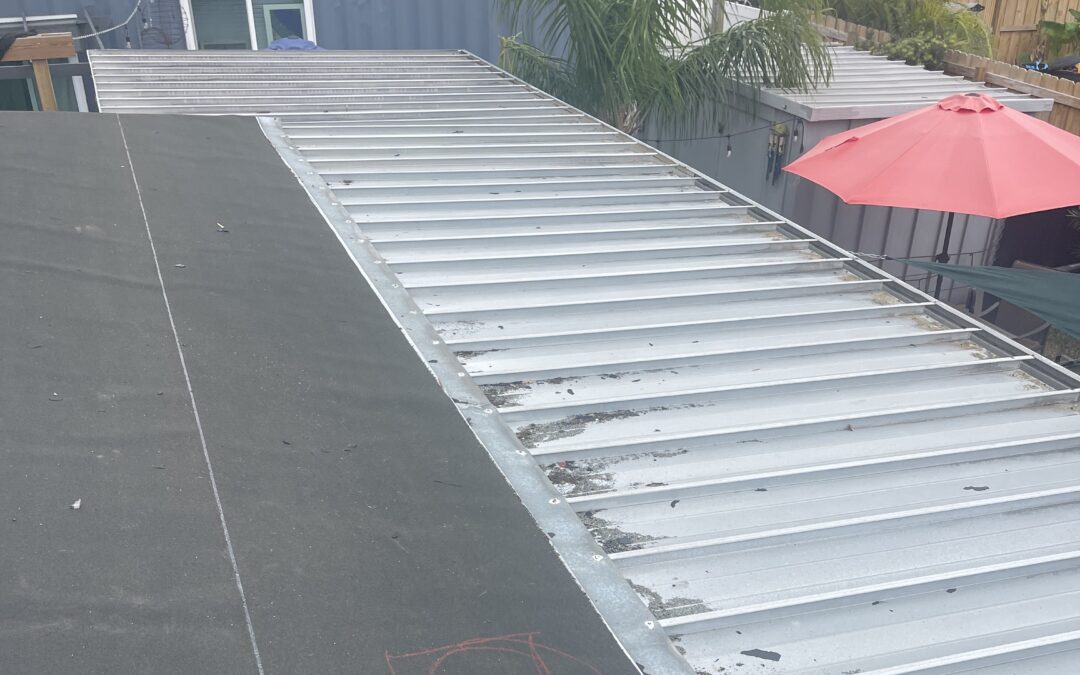Roofs in Tampa Bay face intense sun and sudden, hard rain. The right material keeps water out and energy bills down. It also saves you from repeat repairs.
Choosing residential flat roofing in 2026 isn’t just about looks. It’s about heat, UV rays and heavy summer storms. This guide explains the top materials, how they perform here and what it costs to install them the right way.
Why Material Choice Matters in Tampa Bay
Our sun beats down hard and UV exposure dries out weak membranes. Daily heat cycles also make materials expand and contract, which can stress seams and flashing. Then the summer rains test every drain, scupper and seal on your roof.
Picking the right system helps you manage heat, humidity and ponding. It keeps things dry in a storm. Checking your choices first helps you decide better.
Top Flat Roofing Materials for 2026
- TPO (Thermoplastic Polyolefin): TPO is a lightweight roof that uses its white color to stop heat. It only lasts a long time if the installer carefully melts the seams together.
- PVC (Polyvinyl Chloride): PVC is a very strong roof that fights sun damage and chemicals. The melted seams are reliable. People like PVC because it keeps houses cool. It costs more than TPO, but it often lasts a longer time.
- EPDM (Ethylene Propylene Diene Monomer): EPDM is a flexible rubber roof that handles building movement well. It resists the sun and stays soft in hot or cold weather. To prevent leaks, the edges must be taped perfectly.
- Modified Bitumen: Modified Bitumen is a strong system that uses multiple layers of material and has a rough, mineral finish. It’s a dependable choice that many contractors know well and it can withstand walking. Since this roof is either melted onto the surface or peeled and stuck down, the installation requires high skill to ensure the material lies perfectly flat without forming bubbles or blisters.
- Flat Metal (Standing Seam on Low-Slope Areas) can work where the slope and details are correct. Metal sheds water fast and holds up well in wind when engineered right. It keeps things dry in a storm. Checking your choices first helps you decide better.
Durability and Maintenance Tips
A long-lasting flat roof needs regular checks and quick fixes. Small problems like holes or clogged drains get huge during a storm. Plan your flat roof repairs before the storm season hits to keep the water out.
Clear the drains. Inspect seams and edges after any major weather. Keep a record of your checks. This lets you catch issues early and make small, cheap fixes.
Energy Efficiency and Sustainability
TPO and PVC are white roofs that reflect sun and cut heat. An old roof can get an energy boost with a reflective coating. That helps AC units run easier during our long, hot afternoons.
Some roofing options are better for the planet (recyclable/low-VOC). An easy way to cut cooling costs fast is by adding insulation when the new roof is installed. Ask about ratings and coatings that meet Florida energy goals.
Weather Resistance and Local Performance
PVC and TPO handle UV and heat well when seams are welded right. Modified Bitumen stands up to foot traffic and daily thermal movement. EPDM flexes nicely but needs precise detailing around penetrations in our storms.
Our residential flat roofing is designed for Florida. We use expert flat roofing services that meet all Florida codes and weather needs.
That means tight seams, correct slope where possible and clear drainage paths. Good design keeps water moving and reduces stress on your system.
Signs It’s Time for a Material Upgrade
Aging membranes turn brittle and seams start to open. Recurrent ponding near low spots points to drainage or taper issues. If you see daylight at edges or bubbling, it’s time to call us.
Active leaks, surface cracks and patches that fail are red flags. A professional inspection can confirm whether targeted flat roof repairs make sense or a full replacement will save money long term. We’ll explain both paths with plain numbers.
Professional Installation and Warranty Support
Correct installation protects your investment and your warranty. Manufacturer specs and Florida Building Code details must be followed to the letter. That’s how you avoid costly callbacks and denied claims.
Licensed flat roofing services also protect your home and your family. Metro Builders Tampa Bay is licensed and insured and we stand behind our work. Our certifications help keep warranties valid and your roof’s performance well.
Cost Ranges and Value Factors
Pricing depends on roof size, access, insulation and flashing details. In 2026, single-ply systems like TPO, PVC and EPDM often run from around $6–$12 per square foot, depending on size and system. Modified Bitumen may fall in a similar band, while engineered metal solutions can range higher.
Value comes from proper design, quality materials and proven installers. We help you weigh lifespan, energy savings and maintenance plans.
These are approximate costs, pricing may vary after a full roof inspection.
Long-Term Care for Flat Roofs
Cleaning the roof by season makes sure water flows and helps the roof last longer. Clear all leaves and trash after storms and before the summer rain starts. We also check seams, terminations and flashing to catch issues early.
Metro Builders offers flat roof repairs and maintenance plans across Tampa Bay. Our flat roofing services include detailed reports, photos and a simple action list. You get clear priorities and fair pricing before any work begins.
Final Takeaway
Pick the right residential flat roofing for your home and our climate. Keep it maintained, and always work with a local expert.
We’re here to help you choose smart and build with confidence. Metro Builders Tampa Bay provides expert guidance, code-compliant installs and prompt service. Contact us to schedule your free roof evaluation with Metro Builders today. We serve Tampa, St. Petersburg, Clearwater and nearby areas with licensed, insured teams.
FAQs
What’s the best flat roof material for Florida’s hot climate?
TPO and PVC are strong choices because they reflect heat and resist UV. Modified Bitumen also performs well when installed and maintained correctly.
How long does a residential flat roof usually last?
Many systems last 15–25 years with routine care. Good drainage and checking the roof often help it last longer.
Can I repair a small puncture myself?
DIY patches often fail under heat and storms. We recommend professional flat roof repairs. They make sure the patch sticks tightly and keeps the nearby seams safe.
How often should I schedule a roof inspection?
Check your roof twice a year and after big storms. Our flat roofing services include seasonal checkups that catch small issues before they spread.

Chris Price is the CEO of Metro Builders, with over 25 years of experience in construction and project leadership. He’s passionate about building strong teams, delivering quality projects, and driving innovation in the industry.



Recent Comments